September’s Bird of the Month is the Solitary Sandpiper, and here is the article in the September Kite written by Ben Kolstad.
“In the last article we discussed a vexing species pair of sandpipers in the genus Tringa: Greater and Lesser Yellowlegs. In the next two articles, we discuss how to ID a pair of sandpipers in two different genera: Solitary Sandpiper (Tringa solitaria), the subject of this article, and Spotted Sandpiper (Actitis macularius), to be discussed next month. Both are medium-sized shorebirds, larger than the peeps but smaller than the yellowlegs or willet. Even though these birds are in different genera, their overall aspect, at least in the winter plumage that we see here in Palm Beach County, causes some confusion among birders.
BEHAVIOR: Roger Tory Peterson’s classic field guide provided perhaps the best method for distinguishing Spotted from Solitary: behavior. He asks, “Does it teeter like a spotted sandpiper? Or nod like a solitary?” If it nods its head, it’s a solitary; if its whole body teeters, it’s a spotted. Other sources, including the Cornell Lab, tend to muddle this rather clear definition, allowing that “Solitary Sandpipers do teeter a bit, but they jerk their body up and down a few times, unlike the continual bobbing of a Spotted Sandpiper.” For my money, RTP has it best: head movement alone = solitary, whole body movement = spotted.
FIELD MARKS: If you have a picture of the typical Tringa sandpiper, you’ll have a good idea of what the Solitary Sandpiper looks like. Some might describe this rather nondescript bird with a scattering of small white spots on an olive drab background as a yellowlegs except without, well, yellow legs (the solitary has greenish legs like its Palearctic counterpart, the greenshanks). Perhaps the most prominent field mark of a Solitary Sandpiper is the eye ring; apart from that, it is indeed quite plain. A good thing to look for is brown on the chest; the Spotted Sandpiper in winter plumage is white there.”
(Photographer’s please note that next month’s October 2016 Bird will be the Spotted Sandpiper)
- Solitary Sandpiper Sweetwater Park Gainesville by Don Davis
- Solitary Sandpiper Riverbend Park by Larry Hess
- Solitary Sandpiper Riverbend Park by Larry Hess
- Solitary Sandpiper Peaceful Waters by Paul Thomas
- Solitary Sandpiper Peaceful Waters by Paul Thomas
- Solitary Sandpiper by Susan Faulkner Davis
- Solitary Sandpiper with Black-necked Stilt by Suzanne Zuckerman
- Solitary Sandpiper by Suzanne Zuckerman

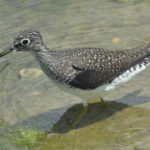
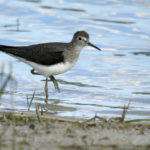
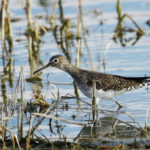
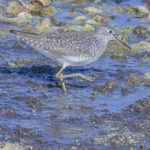
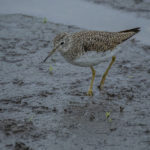
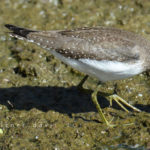
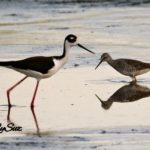
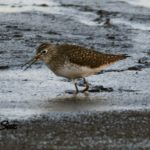
Comments are closed